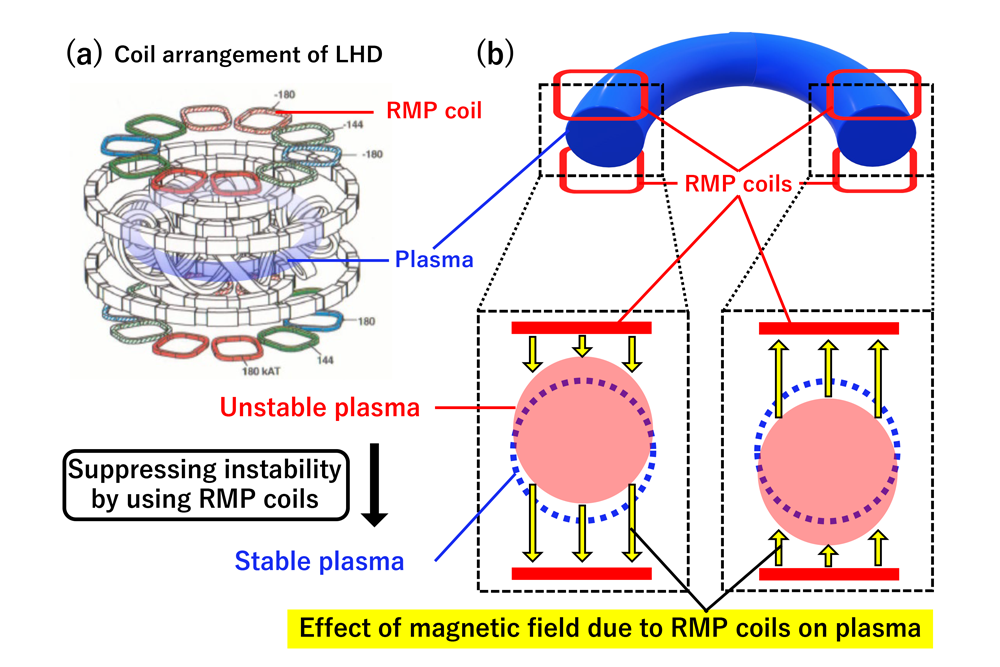Suppression of Plasma Instability by Applying Specific Magnetic Field
In an experiment at the Large Helical Device (LHD), it was found that resistive interchange instability, which is a typical MHD instability in the LHD, can be suppressed by applying a magnetic field having a specific spatial structure (resonant magnetic perturbation: RMP). Moreover, the suppression of the instability leads to improvement of plasma confinement performance degraded by the instability. This achievement will contribute to development of a method to produce and maintain high-pressure plasma.

For realizing a nuclear fusion power plant, we need to confine fuel plasma in a torus magnetic bottle generated by superconducting coils. Because its output power is proportional to the square of plasma's pressure, it is necessary to stably maintain the plasma with quite high pressure. However, there are some obstacles to achieving this, and one of them is plasma instability. Though the plasma is confined by the magnetic bottle, it sometimes disturbs or breaks the bottle due to its inducing magnetic and/or electric field, because plasma consists of electrons and ions which have electric charges. We call the phenomena instability and when it occurs, the plasma confinement performance is degraded, which means a decrease of plasma pressure. So, it is necessary to suppress the instability in some way and/or avoid the decrease.
In this research, we investigated the suppression method of a typical instability observed in the Large Helical Device (LHD) by applying a magnetic field having a specific spatial structure (resonant magnetic perturbation: RMP) induced by an additional coil set, as shown in the figure. It was found that the degree of the instability decreased monotonically as the RMP by the coils increased. Moreover, it was shown that the suppression of the instability lead to a little increase in the plasma pressure which was degraded by the instability. This result indicates that the plasma confinement performance improves through the suppression of the instability due to the RMP. On the other hand, if the RMP becomes too strong, it severely deforms the magnetic bottle and degrades the plasma confinement performance greatly. In this case, though the instability is suppressed, there is no merit because the plasma pressure is badly degraded compared with a case with no RMP field. Thus, it is important to apply the RMP by coils with appropriate strength for the suppression of the instability and the recovery of the plasma confinement performance.
We confirm that under variable experimental conditions in the LHD, the RMP can suppress the instability by the above-mentioned method. This achievement will contribute to the development of a method to produce and maintain high pressure plasma through the suppression of plasma instability.
This research was conducted by Shu Ito from Nagoya University and Kiyomasa Watanabe, Yuki Takemura and Satoru Sakakibara from the National Institute for Fusion Science (NIFS), in collaboration with Sadao Masamune from Chubu University.
This research result was published on April 17, 2023 in Nuclear Fusion, a journal on controlled thermonuclear fusion by the International Atomic Energy Agency.
